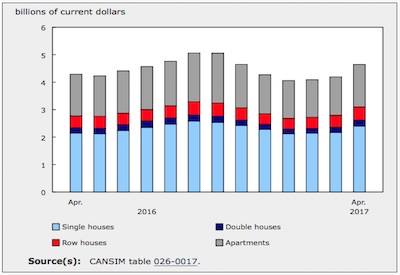Who Holds the Knowledge in Your Organization?

October 12, 2016
We’ve all done it. Spent considerable time working on a key document or spreadsheet only to forget where we saved it, and had to start again. Or gone to ask for advice from a subject matter expert in the company only to realize he /she has retired — along with the 30 years of tacit knowledge in their head that’s not all captured “in the files.”
The demographics and changing dynamics of the Canadian workforce pose both opportunity and risk for organizations. Risk comes in the form of the loss of knowledge that is unique to the business — legacy systems, innovations, trouble shooting, etc. — the loss of which could have significant implications for business competitiveness, productivity, and even health and safety.
This highlights more than ever the need for companies to look at how they manage the knowledge in their organization. Knowledge management (KM) is essentially the ability of a business to create, share and use the collective knowledge of its products, processes and people to increase workplace productivity and reduce activities that reinvent the wheel.
A knowledge management strategy is simply a plan that describes how an organization will manage its knowledge better for the benefit of that organization and its stakeholders.
Knowledge and information can leak in all sorts of ways and at all sorts of times. To make sure that essential knowledge is retained by an organization requires a range of techniques (from traditional information management tools such as shared drives, to more modern techniques such as company blogs), that can be employed to ensure that knowledge is not only stored but transferred.
Many of these tools are simple and trying them out requires nothing more than the desire to try something new. Undertaking them effectively requires effective — sometimes advanced — facilitation and communication skills. Other tools are more complex, and call for significant planning and resources if they are to be delivered effectively.
Strategies and actions to ensure that knowledge is transferred and retention efforts are a more integral aspect of workforce planning and management activities include:
- engaging strong commitment to oversee knowledge transfer and retention activities and to develop incentive structures that promote knowledge sharing within and across work teams
- opening up hierarchical frameworks and bureaucratic divisions and boundaries to promote horizontal knowledge and information sharing
- creating specific opportunities for younger workers to enter into coaching, shadowing or on-the-job mentoring programs with experienced older employees and/or take on projects that stretch capabilities and transfer critical organizational knowledge
- valuing and rewarding knowledge transfer in planned work outcomes and performance appraisals
- using job redesign to create “special skill and knowledge transfer” roles that call on particularly skilled employees to undertake special organizational knowledge, history and skill development projects or training, mentoring or coaching based activities
- using team based approaches to managing long term projects and good recordkeeping practices to ensure effective transfer of knowledge between existing and exiting employees
Below are four steps to implement a people-based KM/KT strategy.
1. Prioritize positions where knowledge needs to be preserved
This involves identifying positions where the knowledge held is of high strategic importance and the expected rate of attrition is high. A common gauge of importance is that a particular person or group’s absence from the workplace would be quickly noticed. Other factors that make a person or a group valuable include their understanding of organization critical procedures and methods; the holding of expert knowledge of key equipment or key business tools; their relationships with key stakeholders; their role as a facilitator of knowledge exchange already within the organization, and their specific experience of local conditions and other options.
2. Identify critical at-risk knowledge for each position
Once you have identified the positions, people or groups on which to focus knowledge retention efforts, consider the specific types of knowledge these individuals possess and what the impact will be if these are taken away (e.g., ability to perform all tasks related to management of budget, relationships with major clients, knowledge of system shortcuts, expert ability to research new information, and so on).
3. Prioritize techniques for transferring and managing knowledge
A knowledge management strategy may encompass a range of specific activities such as the coordinated development of codification based systems such as databases, internets, intranets and expert software and process mapping. More importantly for workforce managers, the strategy could include people-based activities such as mentoring, training, job shadowing, succession planning, inclusion of knowledge sharing commitments in performance agreements, establishing communities of practice, conducting social network analysis, and developing knowledge maps.
4. Build a plan of action for each potential initiative
For each knowledge transfer and retention activity identified, establish a business case or statement of organizational need that examines the cost of doing nothing and identifies a means of measuring the results for those projects that are to proceed.
Research by Electricity Human Resources Canada (EHRC) has shown that over a third of the industry does not have knowledge transfer tools and processes in place. Don’t wait until your corporate memory is lost. Identify the needs within your organization, find a champion to lead change, establish performance indicators, and ensure that you measure the effectiveness of the implementation plan so that you can perform any necessary corrective measures through continuous monitoring and improvement.
To read EHRC’s Knowledge Management & Transfer Report visit: http://electricityhr.ca/kmat/.
Michelle Branigan is CEO, Electricity Human Resources Canada; http://electricityhr.ca.










![Guide to the Canadian Electrical Code, Part 1[i], 26th Edition – A Road Map: Section 10 – Grounding and Bonding](https://electricalindustry.ca/wp-content/uploads/2022/11/Guide-CE-Code-2.png)





